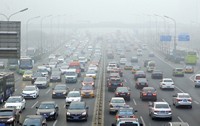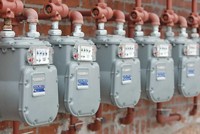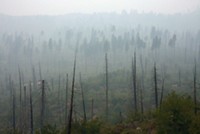Advertisement
Grab your lab coat. Let's get started
Welcome!
Welcome!
Create an account below to get 6 C&EN articles per month, receive newsletters and more - all free.
It seems this is your first time logging in online. Please enter the following information to continue.
As an ACS member you automatically get access to this site. All we need is few more details to create your reading experience.
Not you? Sign in with a different account.
Not you? Sign in with a different account.
ERROR 1
ERROR 1
ERROR 2
ERROR 2
ERROR 2
ERROR 2
ERROR 2
Password and Confirm password must match.
If you have an ACS member number, please enter it here so we can link this account to your membership. (optional)
ERROR 2
ACS values your privacy. By submitting your information, you are gaining access to C&EN and subscribing to our weekly newsletter. We use the information you provide to make your reading experience better, and we will never sell your data to third party members.
Environment
Lightning And Wildfires Spark Ozone Pollution
Air Quality: Modeling suggests that emissions of ozone-generating nitrogen oxides from natural sources are surprisingly high
by Catherine M. Cooney
May 12, 2011

In developing air quality standards, the Environmental Protection Agency doesn't routinely consider emissions from lightning and uses only rough estimates of wildfire emissions. That's because the emissions are difficult to characterize, and in some cases scientists have believed they aren't as important as pollution from manmade sources such as factories, power plants, and cars. Now researchers have estimated that ozone-forming nitrogen oxide (NOx) emissions from lightning and wildfires significantly contribute to ozone air pollution in the U.S. (Environ. Sci. Technol., DOI: 10.1021/es103645m).
Over the past 20 years, anthropogenic emissions of ozone have dropped in response to regulatory action. As a result, the relative contribution of natural emissions to the total ozone emissions in the U.S. has grown, says Stephen Mueller, a senior atmospheric scientist with the Tennessee Valley Authority.
In previous research (Atmos. Chem. Phys., DOI: 10.5194/acp-10-4931-2010), using emissions data and modeling, Mueller and colleagues developed a database of natural emissions not routinely included in regulatory decisions. In the new study, the team focused on two of those natural emissions sources, wildfires and lightning strikes. They entered the data on natural emissions into EPA's Community Multiscale Air Quality modeling system, which uses advanced computing techniques to generate air pollution estimates with fine spatial and temporal detail. The model then simulated ozone levels in various parts of the country.
Their results surprised Mueller: Wildfires and lightning significantly contribute to ozone levels. Ozone-forming NOx from lightning, he found, make up about 50% of natural emissions in the southeastern U.S., where most lightning strikes occur. In some cases, the model's simulated wildfire emissions added up to more than 90% of the natural emissions at several locations in the West.
This modeling indicates that states should include NOx emissions from lightning and wildfires when developing management plans to meet EPA's ozone standards, Mueller says.





Join the conversation
Contact the reporter
Submit a Letter to the Editor for publication
Engage with us on Twitter